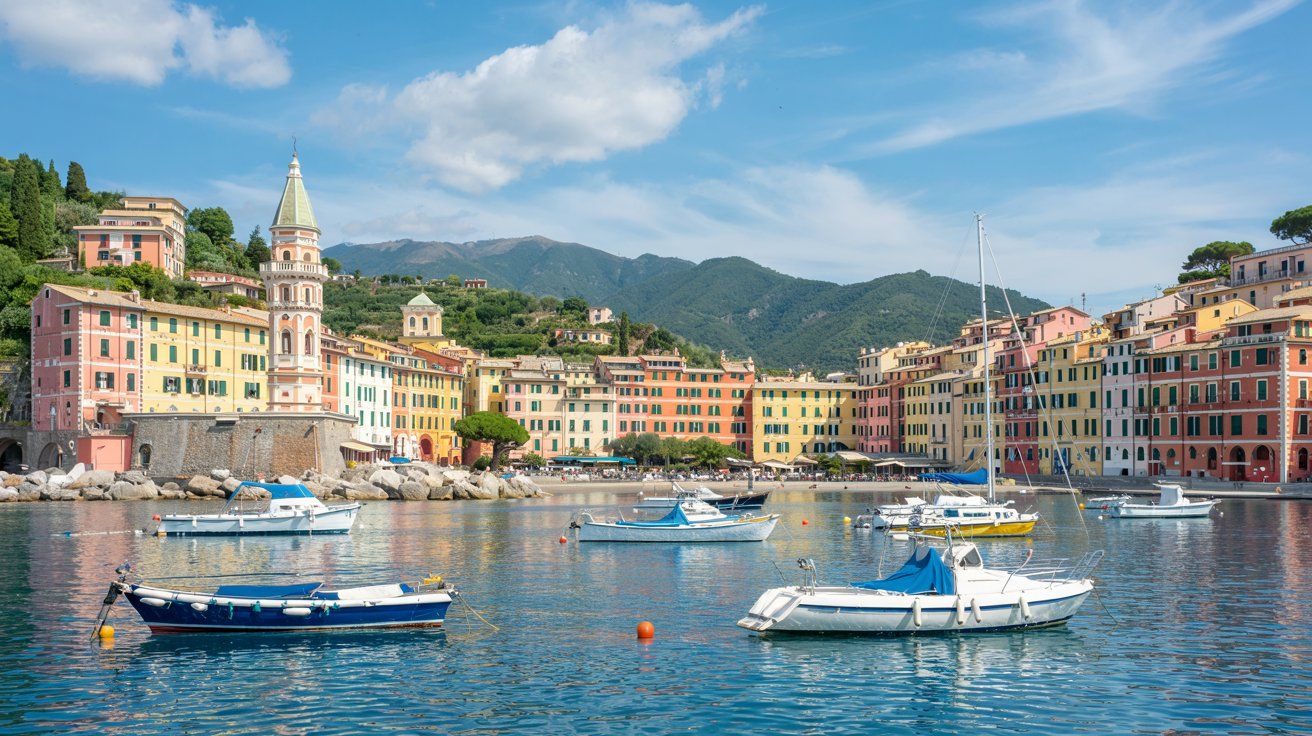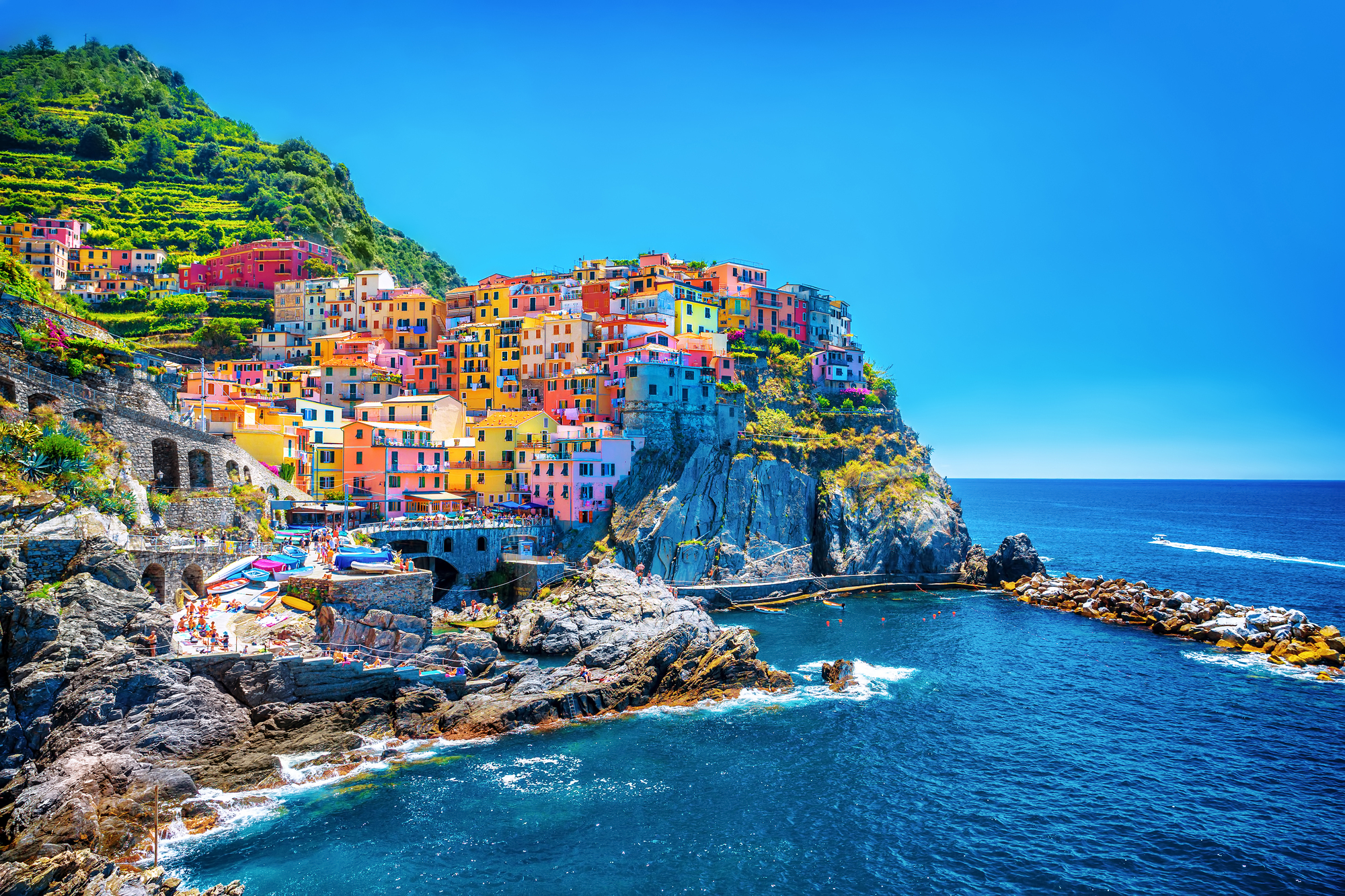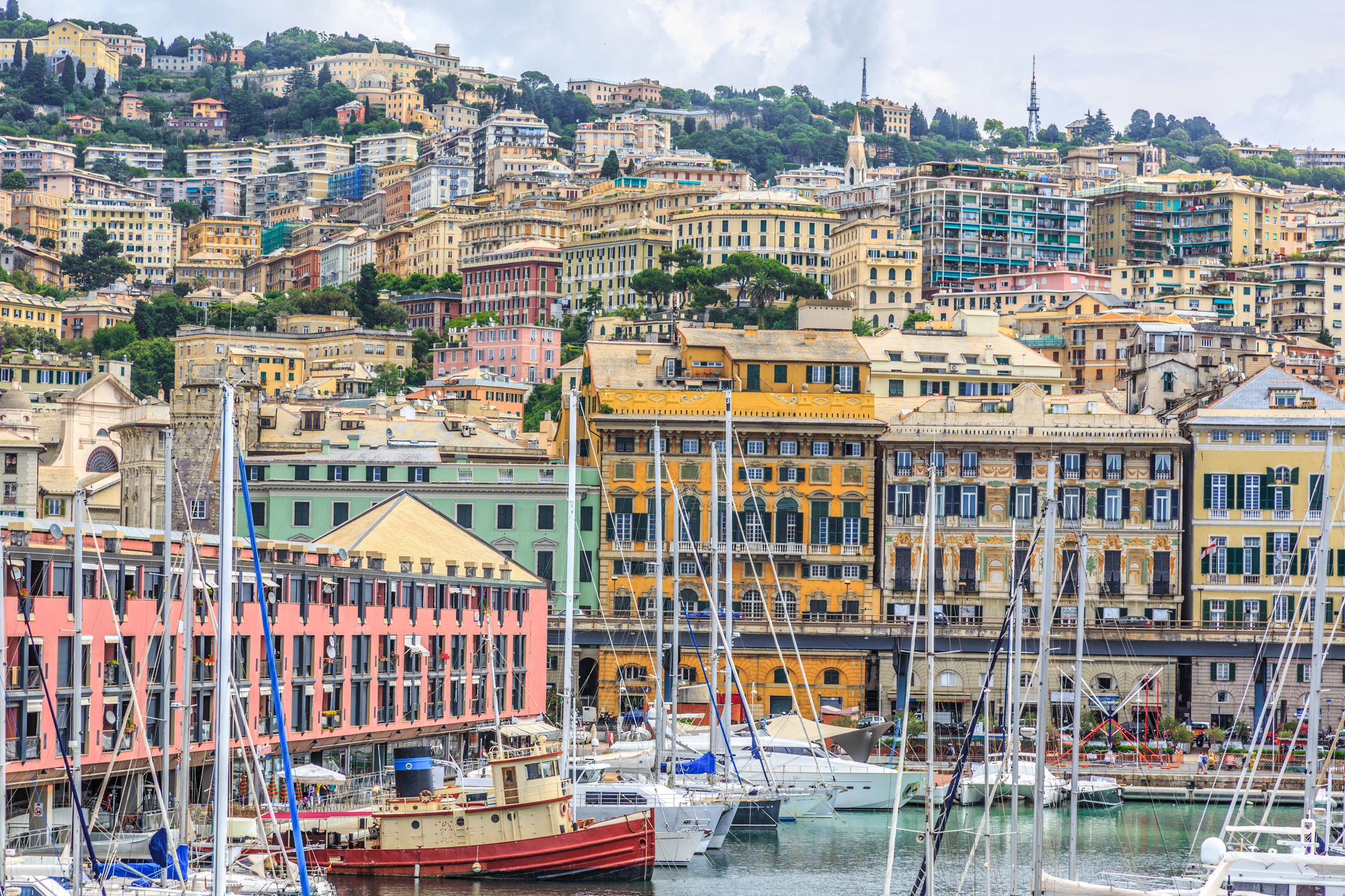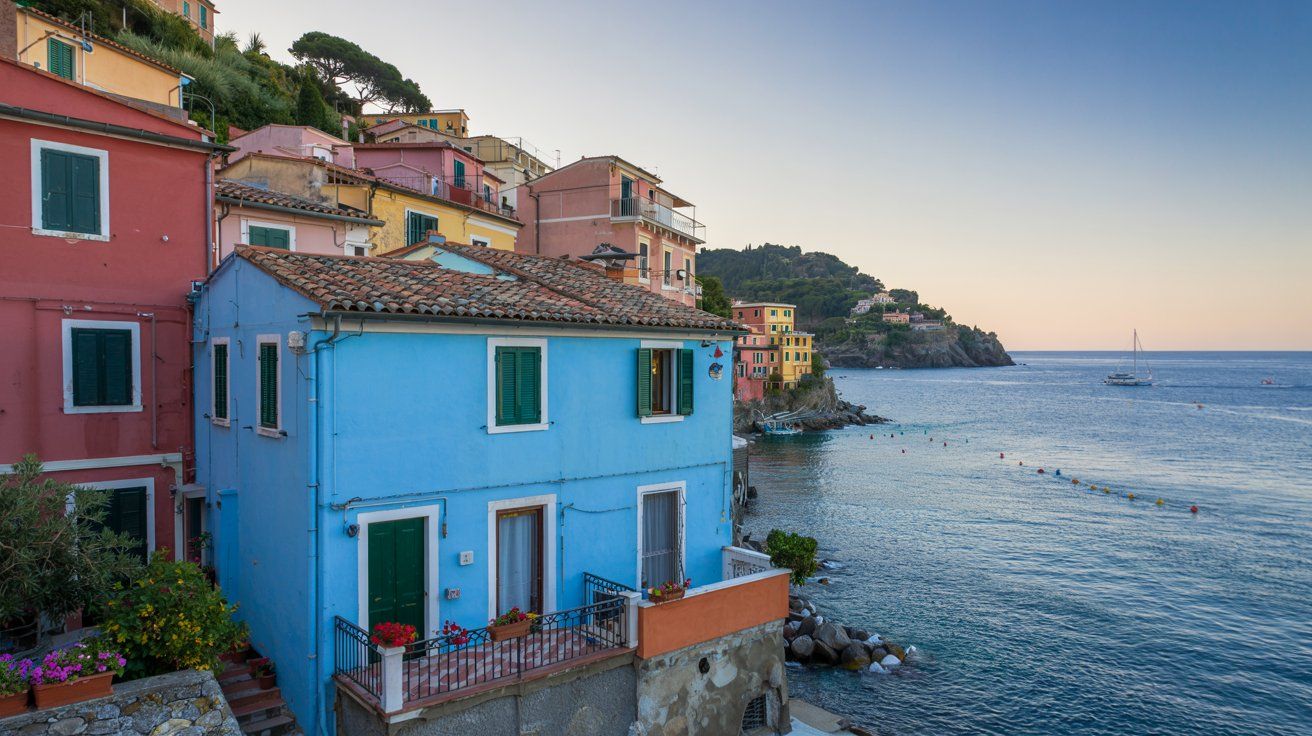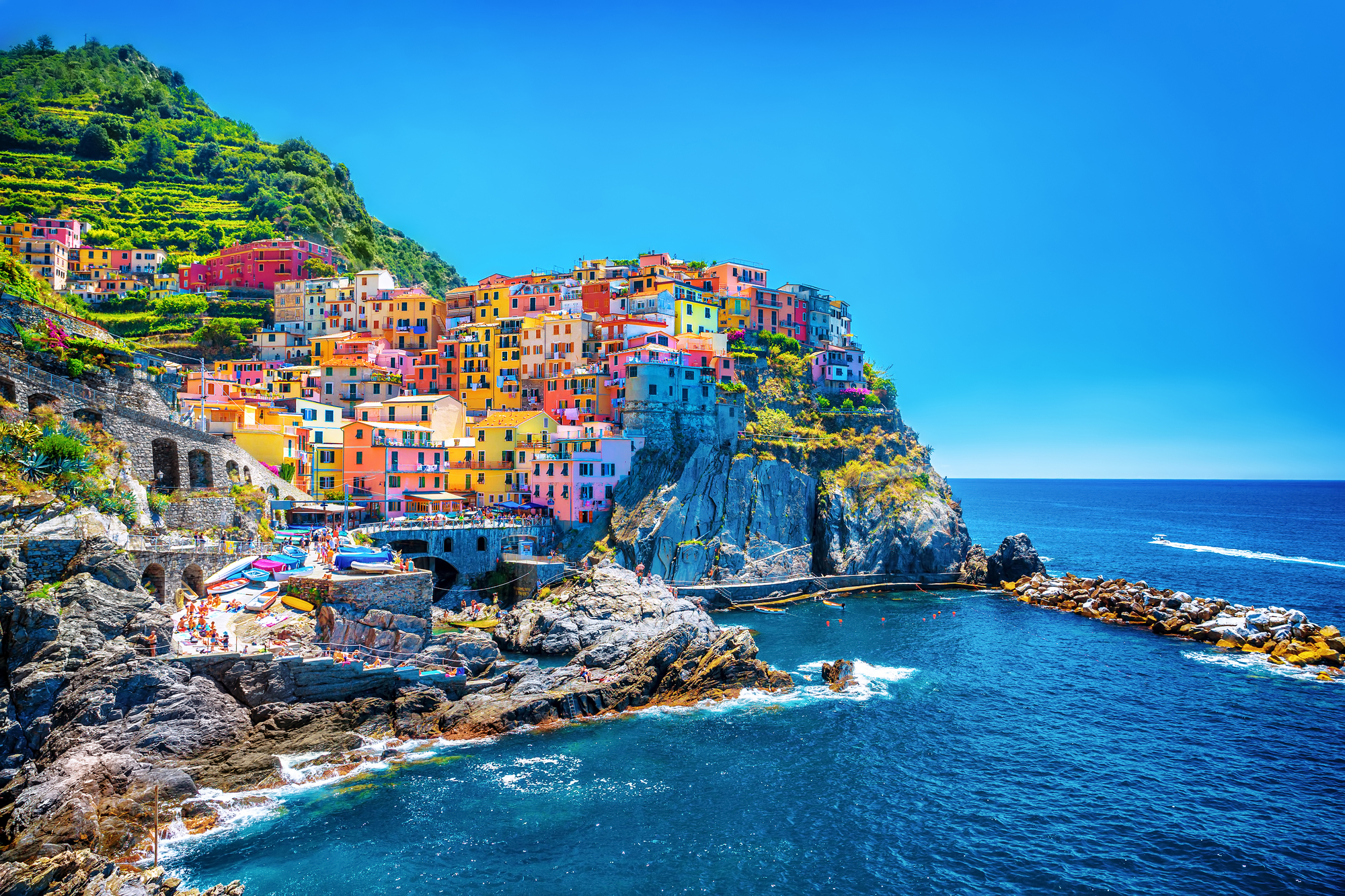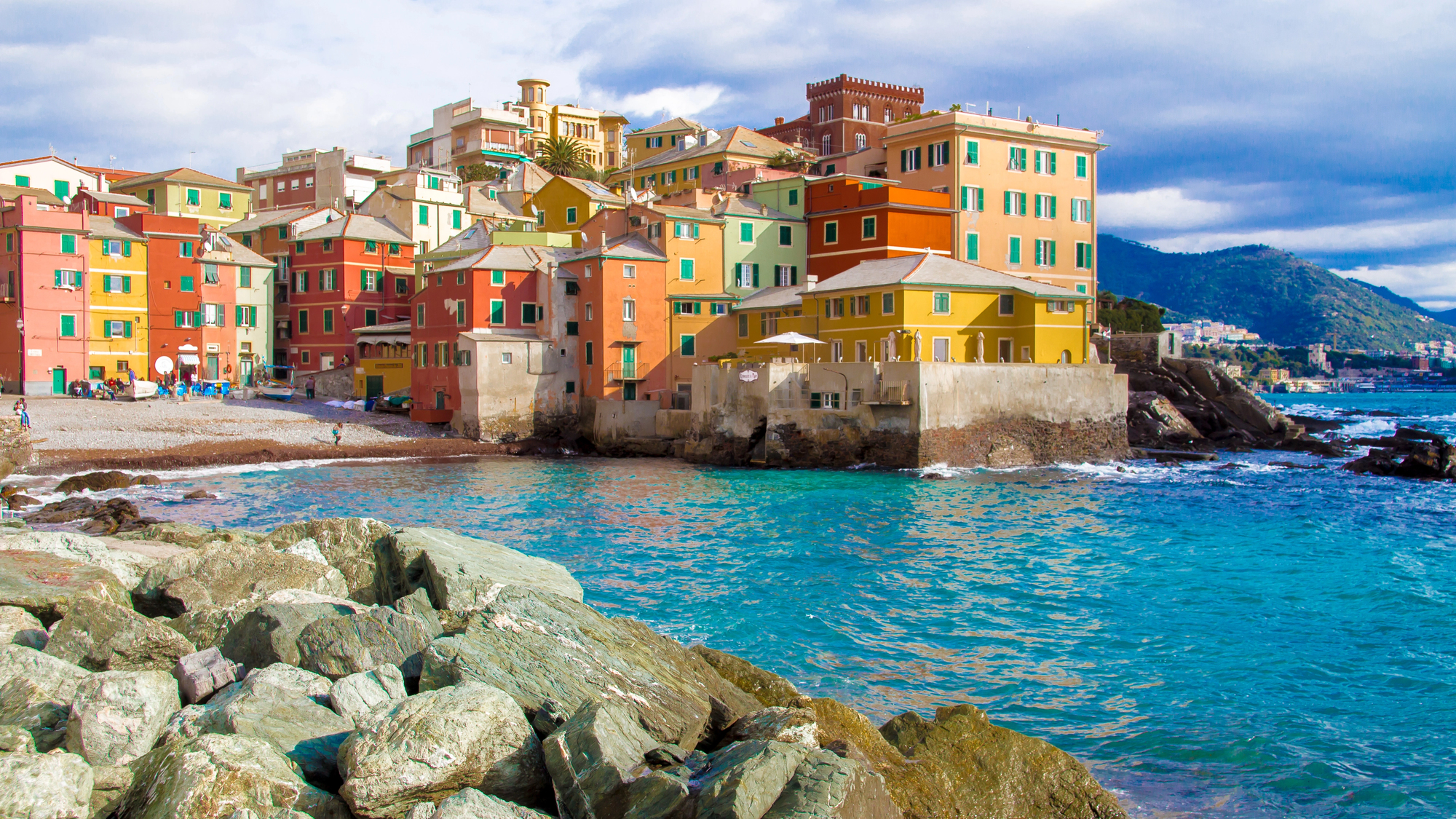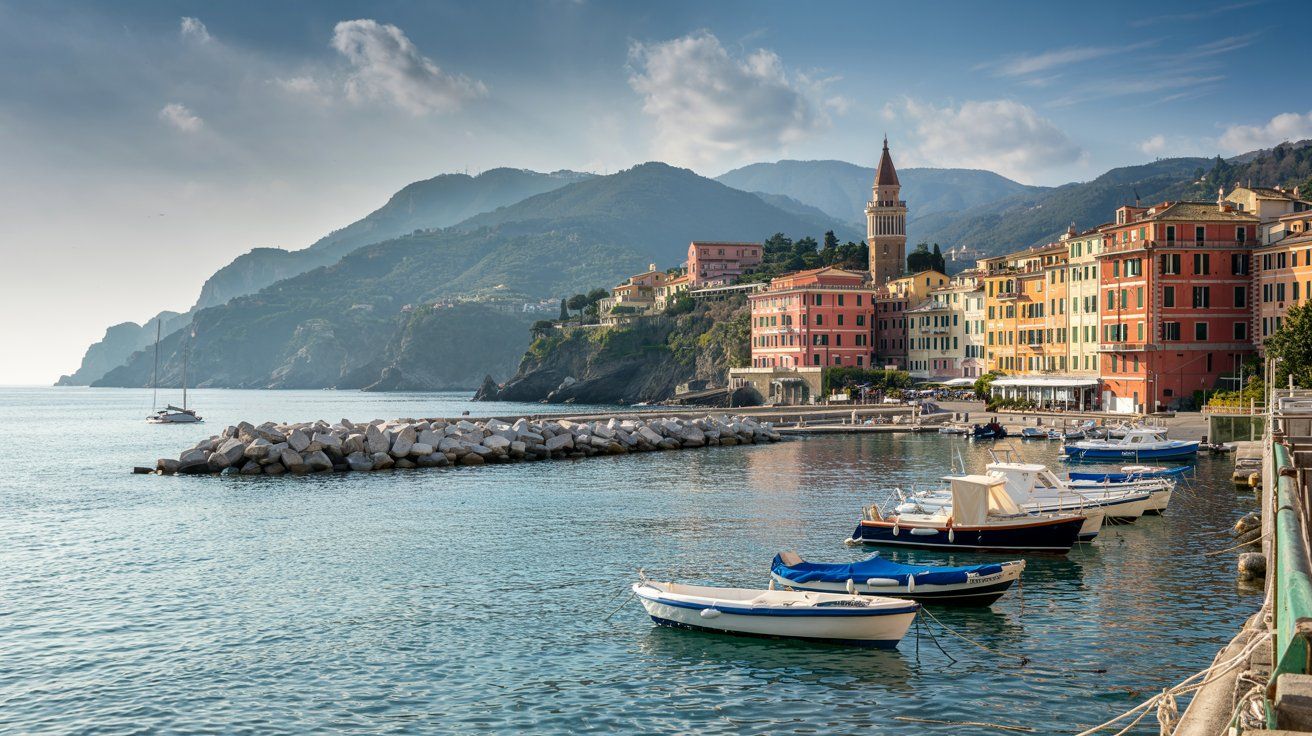Tucked away in the narrow streets of Genoa, Italy, lies a hidden historical treasure – the Jewish Ghetto. The earliest Jewish presence in Genoa dates back to the 6th century, though for over a thousand years, their existence remained sporadic. In 1660, the approximately 200 Jews living in Genoa were confined to a ghetto area that featured two iron gates, which remained closed from sunset until morning.
When you walk through the heart of the ancient Jewish ‘ghetto’ near the ‘Lanterna‘ (the old lighthouse that symbolizes the city), you can still feel echoes of the past. The Jewish population grew to about 700 people during the ghetto period, creating a vibrant community despite restrictions. The enforcement of ghetto living varied over time, sometimes strictly implemented and other times more flexible.
Get a discount of 15% to 70% on accommodation in the Italian Riviera! Look for deals here:
Italian Riviera Hotels, Apartments, B&Bs
Today, exploring this historic area offers you a glimpse into an important chapter of Italian-Jewish relations. The architecture and layout of the neighborhood still bear witness to this segregated past. As you wander these streets, you’ll discover how a community maintained its identity and traditions while adapting to challenging circumstances in one of Italy’s most important port cities.
History of Jewish Ghetto in Genoa, Italy
The earliest records of Jewish presence in Genoa date back to the 6th Century.
By 1660, approximately 200 Jews lived in Genoa. That year marked a significant change when they were officially confined to a ghetto area.
The Genoese ghetto had two iron gates that remained closed from sunset until morning. Inside these confines, the Jewish population grew to about 700 people.
Interestingly, enforcement of ghetto residency rules sometimes varied. Records show that two years after the ghetto’s establishment, many Jews still lived outside its boundaries.
The forced enclosure of Genoese Jews ended in 1679. From this date forward, they were no longer obligated to live within the ghetto walls and gradually began moving to other parts of the city.
Like other Italian Jewish communities in places such as Ferrara, Genoese Jews faced changing policies influenced by papal bulls and varying degrees of anti-Semitism.
Throughout Liguria and other parts of Italy, Jewish ghettos represented a complex mix of segregation and community preservation. While restrictive, these areas also became centers of Jewish culture and tradition.
Today, you can still explore remnants of this history in Genoa’s old city center, where architectural clues and historical markers help tell the story of this important chapter in Italian Jewish heritage.
What to See in Jewish Ghetto
Genoa’s historic Jewish Ghetto offers visitors a glimpse into the rich yet challenging history of Jewish life in this Italian port city. The city actually had two different ghetto locations throughout history, giving you multiple areas to explore.
In the first ghetto, established in the 6th Century, you can wander through narrow streets that once housed the earliest Jewish community. Though much has changed, the medieval layout remains, creating an atmospheric journey through time.
The second ghetto, moved to Piazza dei Tessitori in 1674, sits near the church of St. Augustine. This area has transformed significantly over centuries, but history buffs will appreciate tracing the footsteps of past residents.
Look for remnants of the original ghetto gates, which once controlled movement in and out of these segregated areas. These architectural elements tell powerful stories about the restrictions placed on Jewish residents.
The old city area contains fascinating architectural details that hint at its Jewish past. Notice building facades, doorways, and street layouts that reflect the distinct character of ghetto life.
While exploring, you’ll find yourself immersed in Genoa’s stunning landmarks nearby, creating a rich cultural experience that connects Jewish heritage to the broader history of this maritime city.
Don’t miss the synagogue of Genoa, which stands as a beautiful testament to Jewish resilience and cultural preservation despite centuries of challenges.
How to Get to Jewish Ghetto
Finding the historic Jewish Ghetto in Genoa is quite straightforward. The first ghetto (1660-1674) was located in the area of Vico del Campo, formerly known as Vico degli Ebrei (Jews’ Lane). The second ghetto (post-1674) was situated near Piazza dei Tessitori, next to the Church of St. Augustine.
Both locations are in Genoa’s historic center, making them accessible on foot from many central hotels and attractions. The narrow medieval streets don’t allow for cars, so walking is your best option for exploring these historic areas.
From Genoa’s main train station (Genova Piazza Principe):
- Walk approximately 15-20 minutes southeast
- Follow signs to the historic center (“Centro Storico”)
- Use a map app to navigate to Vico del Campo or Piazza dei Tessitori
Public transportation options:
- Bus lines 20, 30, and 35 will get you close to the historic center
- The metro has limited stops but can bring you to San Giorgio station
For a deeper understanding of Jewish Genoa, consider booking a Jewish Heritage Tour that includes visits to the former ghetto areas, the New Synagogue on Bertora Street, and other significant Jewish sites.
If you’re staying in the city center, the Hotel Bristol Palace offers elegant accommodations within walking distance of the historic Jewish areas.
Jewish Ghetto Visitor Information
The Jewish ghetto areas of Genoa offer visitors a glimpse into the rich Jewish heritage dating back to the 6th century. Located in the heart of the city, these historical sites are easily accessible by foot from the city center.
The first ghetto was established near the area now known as the “Lanterna,” the famous lighthouse that symbolizes the city. The second ghetto, established in 1674, was located at Piazza dei Tessitori, next to the Church of St. Augustine.
Visiting Hours:
- Self-guided walks: Daily, dawn to dusk
- Guided tours: Tuesday-Sunday, 10:00 AM – 4:00 PM
- Synagogue visits: By appointment only
Guided Tour Options:
- 7-Hour Jewish Heritage Tour – Comprehensive tour including the synagogue, cemetery, and both ghetto areas
- Walking Tour of Medieval Jewish Genoa – 2 hours, focuses on the first ghetto area
When planning your visit, comfortable walking shoes are recommended as the areas feature typical Genoese narrow streets and occasional steep inclines.
Photography is permitted in most outdoor areas, but restrictions apply inside religious buildings. Please dress modestly when visiting any religious sites.
The nearest tourist information center is located at Via Garibaldi 12, where you can pick up maps highlighting the Jewish heritage sites throughout the city.
Where to Stay Near Jewish Ghetto
When visiting Genoa’s historic Jewish Ghetto, you’ll find several excellent accommodation options nearby. The area offers a perfect base for exploring this fascinating part of the city’s history.
Hotel Metropole stands out as a wonderful waterside option. It’s conveniently located near the train station and offers beautiful garden views from select rooms.
The NH Genova Centro provides comfortable lodging within easy reach of the Jewish Museum & Synagogue of Genoa. Its central location makes it ideal for tourists wanting to explore multiple city attractions.
For a more intimate experience, Your House Rooms offers personalized service and local atmosphere that larger hotels can’t match.
If you’re looking for something more upscale, Palazzo accommodations combine luxury with proximity to historical sites including the Jewish Ghetto.
While exploring Jewish history in northern Italy, consider extending your trip to other fascinating cities on the Italian Riviera. Milan, Florence, and Trieste all have significant Jewish quarters worth visiting.
Most hotels in the area are within walking distance to the Jewish Museum & Synagogue, making it easy to immerse yourself in the history of Genoa’s Jewish community, which dates back centuries.
Remember to book accommodations early, especially during peak tourist seasons, as the best options near historical sites tend to fill quickly.
Things to Do Near Jewish Ghetto
Genoa’s historic Jewish Ghetto is surrounded by many fascinating attractions worth exploring. After visiting the former ghetto area in the old city, continue your cultural journey with these nearby sites.
The New Synagogue on Bertora Street offers a glimpse into Genoa’s Jewish heritage. This temple welcomes visitors and showcases beautiful architecture and religious artifacts.
Porto Antico (Old Port) is just a short walk away. This revitalized harbor area features the famous Aquarium of Genoa, one of Europe’s largest. You’ll also find museums, restaurants, and shops along the waterfront promenade.
The magnificent Palazzi dei Rolli are UNESCO-listed noble palaces scattered throughout the historic center. These Renaissance and Baroque buildings display stunning architecture and artwork.
Don’t miss these nearby landmarks:
- Cathedral of San Lorenzo – Impressive striped marble façade
- Palazzo Ducale – Former home of Genoa’s doges
- Via Garibaldi – Elegant street lined with palaces
- Piazza De Ferrari – City’s main square with a beautiful fountain
For a taste of local life, wander through the narrow caruggi (alleyways) around the ghetto. These medieval passages are filled with shops, cafés, and hidden squares.
Enjoy traditional Ligurian cuisine at one of the many trattorias near Piazza dei Tessitori, where the second ghetto was established in 1674.
Get a discount of 15% to 70% on accommodation in the Italian Riviera! Look for deals here:
Italian Riviera Hotels, Apartments, B&Bs


